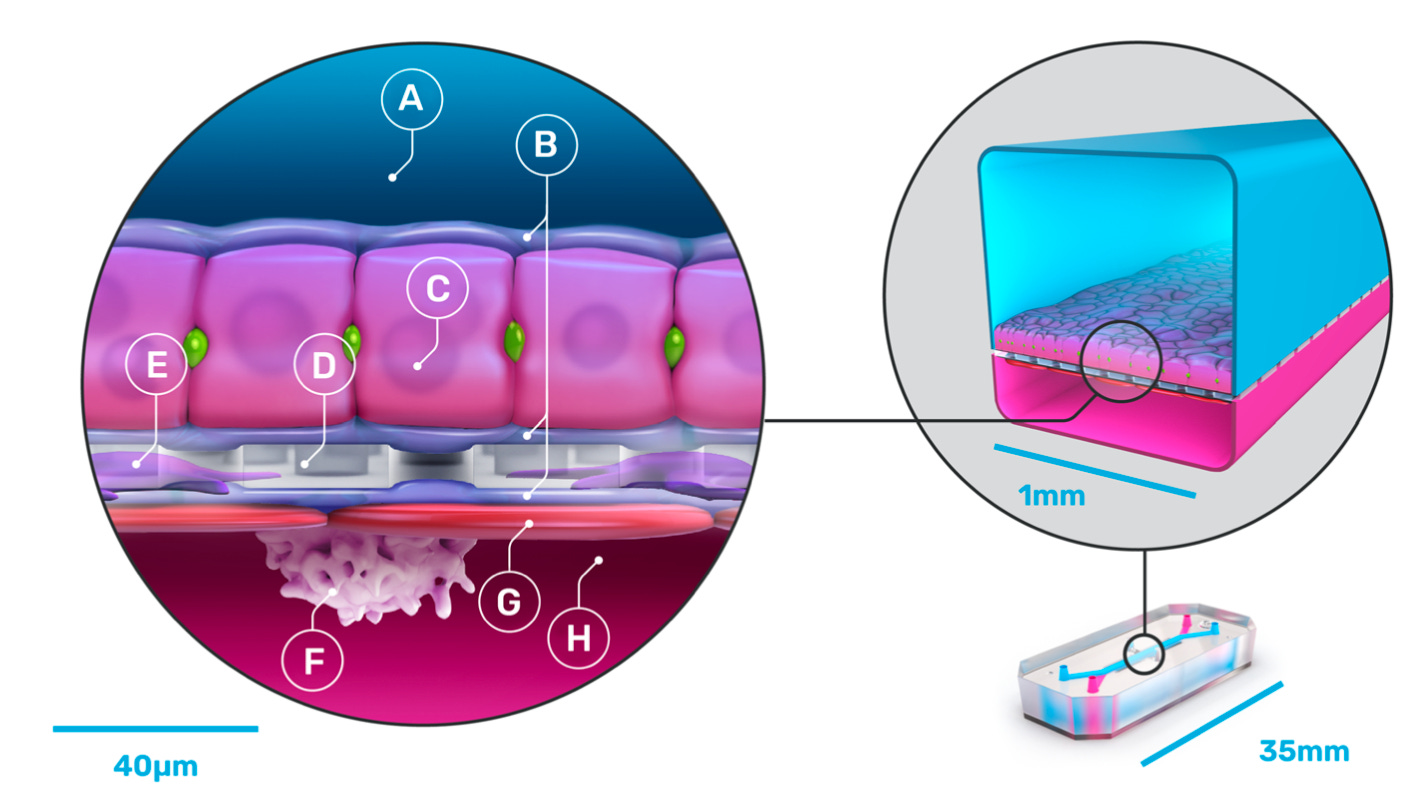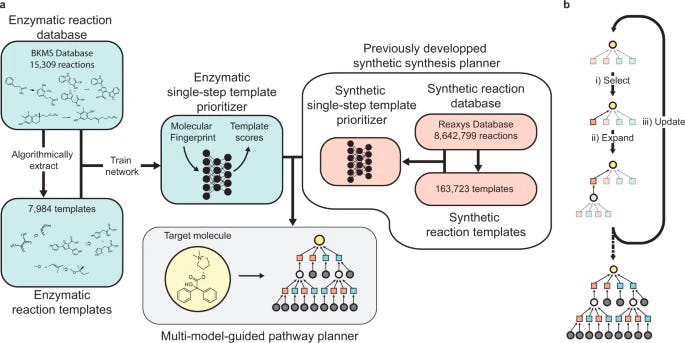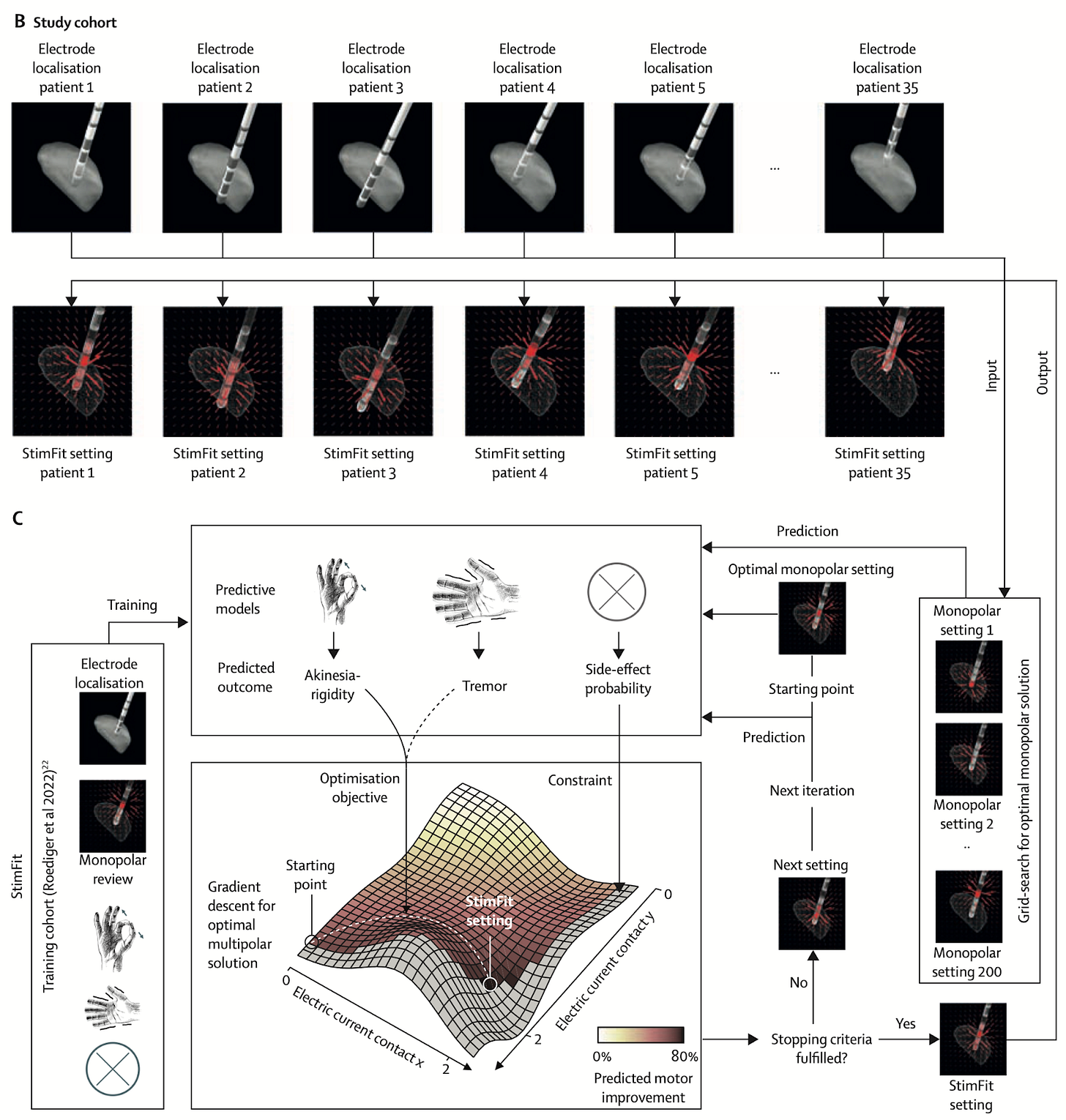BioByte 014
the rise & fall of peer review, predictive toxicology, AlphaFold & CASP15 results, new support for microglia's role in neurodegeneration, interactions btw contraceptive hormones & the brain, & more
Welcome to Decoding TechBio, a writing collective focused on the latest scientific advancements, news, and people building at the intersection of tech x bio. If you’d like to connect or collaborate, please shoot us a note here. Happy decoding!
Happy holidays, everyone! Hope you’re all staying warm and are finally recovered from that legendary World Cup match. Our heart rates are just starting to stabilize again.
We’re excited to bring you our first longer form piece before the year ends. We’ll give you two hints: 1) it’s written by a founder in this community and 2) it has to do with company building, not bio explicitly. In the meantime, here are some reads.
What we read
Blogs
The rise and fall of peer review [Experimental History, Adam Mastroianni, December 2022]
This piece shines light on the history of peer review and how it evolved into what it has become today. Impressively, by one estimate, scientists collectively spend 15,000 years reviewing papers every year! Posing the essential question: “Does peer review actually do the thing it’s supposed to do? Does it catch bad research and prevent it from being published?” Mastroianni argues that the proliferation of fraudulent papers, documented in studies like this one, is sufficient evidence that peer review doesn’t achieve its intended purpose.

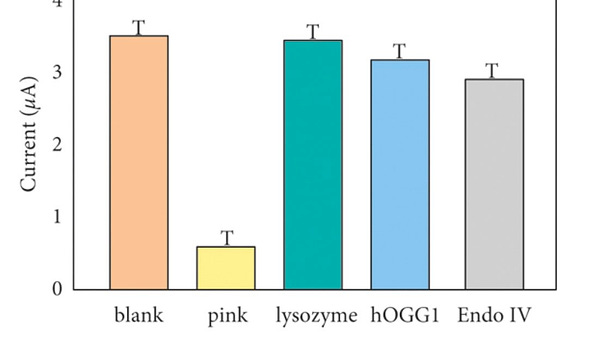
Mastroianni continues to argue that peer review is broken for several reasons:
Peer reviewers don’t review the source data
Scientists often sho rejected papers to new journals vs. listening to reviewer feedback, conducting additional experiments, and re-submitting the paper
Few journals actually publish reviews, and once a paper is published, reviews are often discarded. One might interpret this dynamic in Mastroianni’s words as, “nobody thinks the reviews actually mattered in the first place.”
Many scientists take unreviewed work seriously (i.e., pre-prints, working papers, and blog posts)
We highly recommend checking out more of Mastroianni’s thinking on peer review, science, and our imagination in the piece, “Things Could be Better.”
After AlphaFold: protein-folding contest seeks next big breakthrough [Ewen Callaway, Nature News, 2022]
Why it matters: Since AlphaFold dominated the CASP protein folding competition 2 years ago, the competition has upped the bar with new tasks to be solved to keep pushing the field forward. Since predicting the structure of single proteins and domains has largely been solved, there is now added emphasis on predicting protein complexes, and new tasks such as predicting how proteins interact with drugs or adopt multiple structural conformations. The results from this year’s Critical Assessment of Structure Prediction (CASP) contest were announced last week, and most of the top methods incorporated AlphaFold. The goal of the contest is to use computational tools to predict the structures of proteins that have been experimentally characterized using methods such as X-ray crystallography and cryo-electron microscopy.

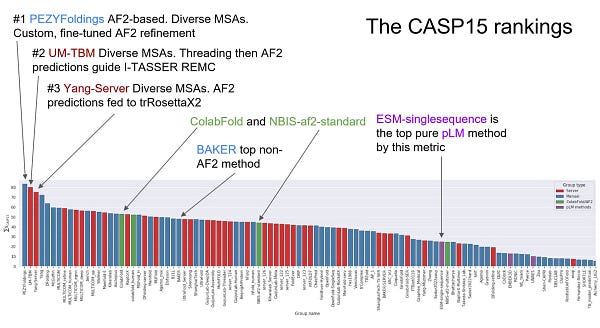
Since AlphaFold dominated the competition in 2020, the contest has made some modifications to make the tasks more difficult. The competition now includes tests like predicting how proteins interact with drugs and the structure of multi-conformational proteins, as well as added emphasis on predicting protein complexes. Interestingly, top algorithms struggled to predict complexes involving antibodies and nanobodies. Large language models, such as the one developed by Meta, did not perform as well as algorithms built on AlphaFold.
Debating the p-values behind Moderna's $16B market-cap gain [Jared Whitlock, Endpoints, 2022 and Moderna And Merck (Revised!) [Derek Lowe, In The Pipeline, 2022]
This week, Moderna announced that their cancer vaccine (mRNA-4157/V940) combined with Merck’s immunotherapy Keytruda (pembrolizumab) cut the risk of later-stage melanoma recurrence or death by 44%. The results led the stock price to gain more than 20%, which is a change of $16 billion in market cap.
After digging into the statistical analysis of the trial, several people launched to criticize the fact that it was designed with a one-sided p-value. Why? Derek Lowe explains this below:
The p-values that you’re used to seeing are from two-sided tests (or they should be!) That’s a more robust way of handling the data, because a one-sided test is basically making the assumption that an effect in the opposite direction of what you want is either impossible, or would no bearing on the conclusions if it were to happen. And that just makes no sense for an investigational drug trial. Think of it this way: if you have two separate patients groups (treatment group and placebo, or treatment group and standard-of-care), then the null hypothesis is that there will be no real difference between the two - that is, the probability of success is identical. What’s the alternative hypothesis that you’re trying to see evidence for in the data? If it’s that the two groups will be different, that’s a two-sided test, because your treatment group could be different-better or different-worse. If you test only for the hypothesis that the treatment group will be better, that’s a one-sided test.
However, after the publication of Lowe’s article, Moderna clarified that the one-sided p-value and statistical analysis were pre-specified and not decided post-hoc. This means there is a good chance that the therapy combination might show positive Phase III results in its next trial, which could be revolutionary for melanoma patients.
Academic papers
Performance assessment and economic analysis of a human Liver-Chip for predictive toxicology [Ewart at al., Nature Communications Medicine, 2022]
The team at Emulate Bio, a company developing and commercializing organ-on-a-chip technology, published a paper concluding that their liver-chip was effectively used for predictive toxicology.
Why it matters: many preclinical models such as traditional cell culture and animal models lack predictive validity. Predictive preclinical models that would help “fail early, fail fast” would lead to fewer expensive investments in drugs that would otherwise fail after human clinical trials. Drug-induced liver injury (DILI) caused by hepatotoxic drugs is a common cause for drug development failure. Accurate prediction of small molecules’ that are likely to cause DILI could have a drastic financial impact in the development of drugs.In order to evaluate whether its liver-chip could predict drug-induced liver injury (DILI), the team tested 27 different small molecule drugs with known hepatotoxic or non-toxic behaviour following the Innovation and Quality consortium recommendations. The results were compared to the historical performance of animal models and 3D spheroid cultures of primary human hepatocytes; models frequently in preclinical stages of drug development.
The chip demonstrated it can correctly distinguish toxic from non toxic structural analogs and, across a blinded set of 27 small molecules, it displayed a sensitivity of 87%, a specificity of 100%. This means it detected 7 out of every 8 drugs that proved to be hepatotoxic in clinical use, despite having shown in animal models to have enough of a therapeutic window. Compared to the 3D spheroid models, the chip identified 2 out of 4 drugs that were additionally missed.
The team also analysed the economic impact of using liver-chip in the development workflow, stating that with broad adoption it could generate $3 billion annually across the industry due to improved R&D productivity. We recommend reading the analysis and let us know what you think below!
Merging enzymatic and synthetic chemistry with computational synthesis planning [Levin et al., Nature Communications, December 2022]
Why it matters: Enzymes are proteins that help chemical reactions occur more quickly and efficiently, often making certain transformations possible that would not be otherwise. Synthetic chemistry is the field of chemistry that focuses on the creation of new chemical compounds using different techniques.This paper by Levin et al. addresses previous bottlenecks in enzymatic and non-enzymatic planning for synthetic organic reactions by leveraging retrosynthetic approaches to explore a wider range of possibilities for synthesizing molecules and traverse chemical space.Retrosynthesis is the process of searching through the space of possible chemical precursors to march from a target molecule to viable starting materials. This approach has historically been considered computatoinally intractable as the search space grows exponentially with search depth. Leveraging a dual neural network architecture that characterizes both enzymatic reactions and synthetic transformations, Levin et al. propose a synthesis planning algorithm that can generate multi-step synthesis plans that explore the breadth of known synthetic and enzymatic chemistry. You can find the code to run the synthesis planner here.
Automated deep brain stimulation programming based on electrode location: a randomized, crossover trial using a data-driven algorithm [Roediger et al, Lancet Digital Health, 2022]
Deep brain stimulation (DBS) of the subthalamic nucleus (STN) is a common treatment for Parkinson’s disease. The selection of anatomical implantation site within subregions of the STN, as well as selection of the optimal electrical stimulation parameters, is a manual and error-prone process. Better methods are needed for precision targeting and stimulation of DBS to drive more effective therapeutic benefit.
In this double-blind, randomized, crossover trial, the treatment effects of a recently published data driven algorithm (StimFit) for the empirical selection of DBS stimulation parameters were assessed. Optimal stimulation parameters were selected on the basis of neuroimaging-derived metrics. In short, electrical fields of DBS stimulation were simulated for a range of stimulation protocols. In short, anatomical electrode locations were provided as input to the model, and electrical fields of DBS stimulation were simulated for a range of stimulation protocols to predict therapeutic effect on range of motor symptoms.
The study included a sample size of 35 patients, roughly half of whom received standard of care stimulation followed by StimFit stimulation, and the other half received stimulation in the opposite order. UPDRS scores (standard clinical score for PD) improved for both stimulation paradigms, and a slightly better (but statistically non-significant) advantage of StimFit over SoC. While generally positive results, it is a bit disappointing to see such a slight advantage for the StimFit approach. Future studies should focus on more real-time biomarkers for closed-loop DBS, and functional in addition to anatomical biomarkers.
Microglia regulate central nervous system myelin growth and integrity [McNamara et al., Nature, 2022]
Why it matters: Microglia are being increasingly recognized as drivers of central nervous system disease pathophysiology. Here, they demonstrate that microglia are required for post-developmental myelin growth regulation, and cognitive function. This contributes to the growing body of work showing that microglia may be promising therapeutic targets in aging and neurodegenerative disease. Here, the authors use a recently developed transgenic mouse model (FireΔ/Δ - Fms intronic regulatory element (Fire) super-enhancer of the Csf1r gene is deleted), resulting in an absence of microglia from development through adult, while keeping other CNS macrophages are present. They demonstrate that microglia maintain myelination homeostasis—limiting hypermyelination and preventing demyelination of existing sheaths—in adulthood. Additionally, it appears that a certain # of microglia are needed to maintain myelin health, as even just a 50% loss is associated with myelin integrity. Of note, this brings to attention the use of CSF1R inhibitors for depleting microglia in cancer or neurodegenerative conditions—how damaging will they be?
Ethinyl estradiol and levonorgestrel alter cognition and anxiety in rats [Simone et al., Psychoneuroendocrinology, 2015]
Why it matters: Ethinyl estradiol and levonorgestrel are commonly used by millions of women as contraceptive hormones. Despite the pervasive use, there is little information on their interactions with the central nervous system. This study suggests that low doses of both hormones administered to mice resulted in a decline in learning and memory but a high dose of ethinyl estradiol had mixed results. With contraceptive hormones so widely used, it’s important to understand the full scope of effects they may have. Although an old article, this study recently came up in discussion and was quite striking. It’s no secret that contraceptive hormones, used widely, come with a host of side effects and affect women differently. Interestingly, very little research has been done on the interactions between contraceptive hormones and the central nervous system. The authors of this study subcutaneously administered a low dose of ethinyl estradiol, levonorgestrel, and a combination of both to female rats and tested for learning, memory, and anxiety-like behavior. The results were startling…but mixed. Both hormones at low doses decreased anxiety-like behavior while a high-dose of ethinyl estradiol increased such behavior. On the other hand, both hormones at low doses resulted in impaired performance on object recognition tests while cognitive performance increased with a high dose of estradiol. Quantitatively, the authors found reduced norepinephrine input to the hippocampus with low dose estradiol and the combination treatment suggested a link to decline in learning and memory. It’s possible the conflicting findings are related to the balance of hormones given the addition through contraceptives and natural ovarian function. While the results are inconclusive on their own, it is clear we need to allocate more effort towards understanding the link between hormones and the CNS. Recent studies have looked at the gut-brain axis and suggested a role for precision medicine in transforming how hormonal birth control is prescribed and administered.
In case you missed it…
Extreme Biology [Elliot Hershberg, Century of Biology, Dec 2022]
Much to Discuss in AI Ethics [Nature Machine Intelligence, Dec 2022]
Machine Learning Predictions of Side Effects for Drugs in Clinical Trials [Cell Reports Methods, Dec 2022]
What we listened to
Notable Deals
Infinimmune raised a $12M seed round from Playground Global, Pear VC, Civilization Ventures, Axial, and more to focus on human-derived antibodies.
Basecamp Research raised a $20M Series A from Systemic Ventures, Hummingbird, Blue Horizon, True Ventures, Valo and others. Basecamp turns towards natural biodiversity to design proteins using graph learning.
Enlaza launched with $61M from Avalon Ventures, Lightspeed Venture Partners, Frazier Life Sciences, and Samsara BioCapital with the mission to expand covalent drug discovery into protein therapeutics.
Ganymede raised a $12.75M Series A led by Caffeinated Capital to build out their cloud infrastructure platform for life sciences R&D and manufacturing.
What we liked on Twitter

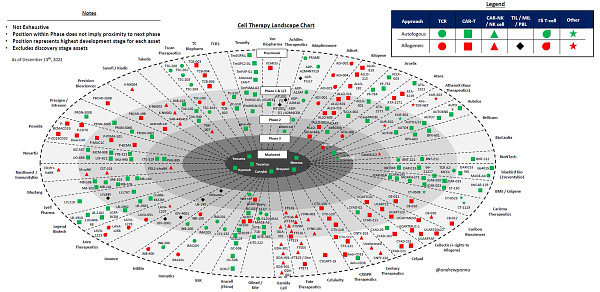





Field Trip

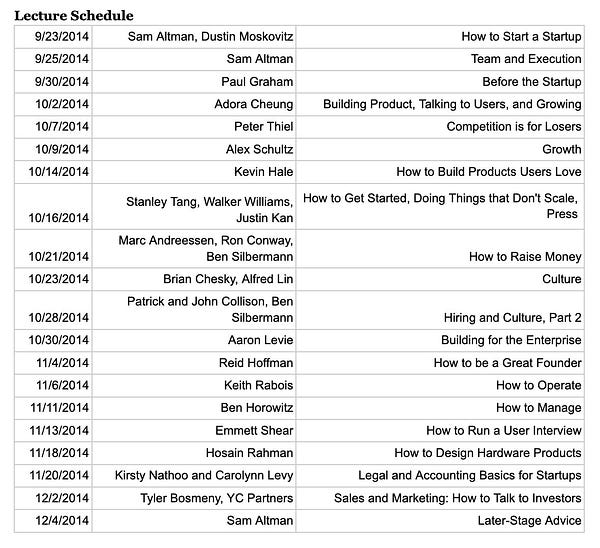
We are all Witnesses [Brian Phillips, The Ringer] (thoughts on Argentina’s historic win)
If you’re looking for a cozy holiday read, we’re currently loving The Dance of Life and Science Lessons: What the Business of Biotech Taught Me About Management
Did we miss anything? Would you like to contribute to Decoding TechBio by writing a guest post? Drop us a note here or chat with us on Twitter: @ameekapadia @pablolubroth @patricksmalone @morgancheatham @ketanyerneni








